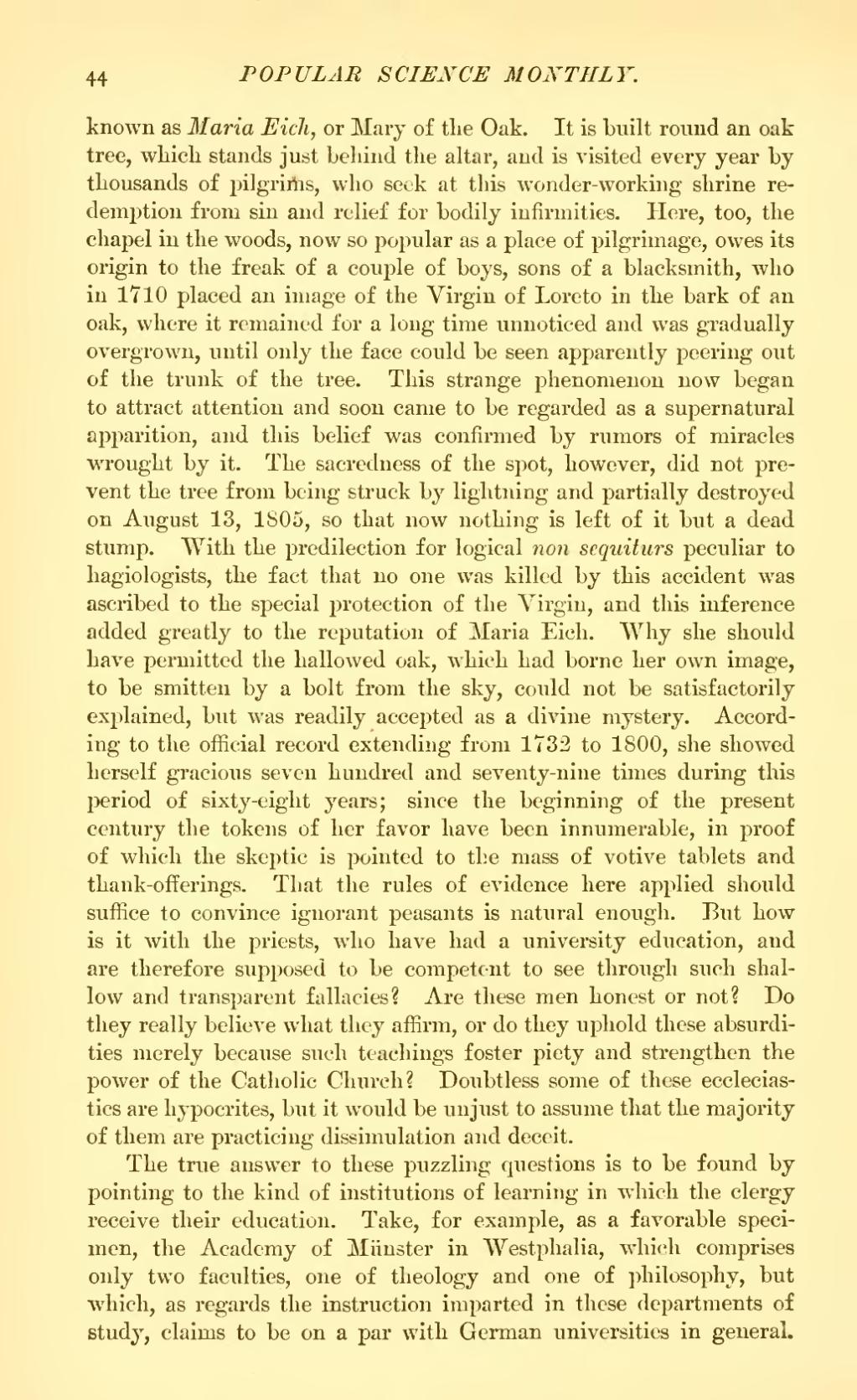known as Maria Eich, or Mary of the Oak. It is built round an oak tree, which stands just behind the altar, and is visited every year by thousands of pilgrims, who seek at this wonder-working shrine redemption from sin and relief for bodily infirmities. Here, too, the chapel in the woods, now so popular as a place of pilgrimage, owes its origin to the freak of a couple of boys, sons of a blacksmith, who in 1710 placed an image of the Virgin of Loreto in the bark of an oak, where it remained for a long time unnoticed and was gradually overgrown, until only the face could be seen apparently peering out of the trunk of the tree. This strange phenomenon now began to attract attention and soon came to be regarded as a supernatural apparition, and this belief was confirmed by rumors of miracles wrought by it. The sacredness of the spot, however, did not prevent the tree from being struck by lightning and partially destroyed on August 13, 1805, so that now nothing is left of it but a dead stump. With the predilection for logical non sequiturs peculiar to hagiologists, the fact that no one was killed by this accident was ascribed to the special protection of the Virgin, and this inference added greatly to the reputation of Maria Eich. Why she should have permitted the hallowed oak, which had borne her own image, to be smitten by a bolt from the sky, could not be satisfactorily explained, but was readily accepted as a divine mystery. According to the official record extending from 1732 to 1800, she showed herself gracious seven hundred and seventy-nine times during this period of sixty-eight years; since the beginning of the present century the tokens of her favor have been innumerable, in proof of which the skeptic is pointed to the mass of votive tablets and thank-offerings. That the rules of evidence here applied should suffice to convince ignorant peasants is natural enough. But how is it with the priests, who have had a university education, and are therefore supposed to be competent to see through such shallow and transparent fallacies? Are these men honest or not? Do they really believe what they affirm, or do they uphold these absurdities merely because such teachings foster piety and strengthen the power of the Catholic Church? Doubtless some of these eccleciastics are hypocrites, but it would be unjust to assume that the majority of them are practicing dissimulation and deceit.
The true answer to these puzzling questions is to be found by pointing to the kind of institutions of learning in which the clergy receive their education. Take, for example, as a favorable specimen, the Academy of Münster in Westphalia, which comprises only two faculties, one of theology and one of philosophy, but which, as regards the instruction imparted in these departments of study, claims to be on a par with German universities in general.
